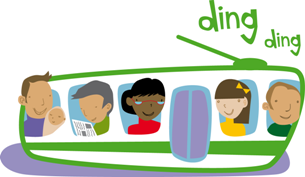For the second time in a week The Age has commented on the State Governments delivery on transport issues - and the scorecard is not good...
 |
| Jason Dowling, The Age City editor |
From Jason Dowling,The Age City editor
A key election promise to ''ensure that the provision of rail services keeps pace with the development of new housing estates'' has been broken by the state government.
Other Coalition promises to ''push for high-speed rail'' on the east coast and to report publicly on the cost of bringing all public transport assets up to 21st-century standards have also not been met.
In November 2010, then Coalition leader Ted Baillieu promised to ensure new housing estates had access to a train service.
''Under John Brumby, rail services have lagged behind the development of new estates by up to 30 years, leaving residents in areas like Rowville and Doncaster stranded and forced to rely on bus services,'' he said.
While the Coalition government is releasing more than 50,000 new housing blocks in Melbourne's growth areas a year, there have been no new rail extensions and none are planned.
A recent letter by Public Transport Minister Terry Mulder to Salman Shami, a resident of the Doreen housing estate in Melbourne's north, indicated rail services would not be keeping pace with new housing in the area.
In the letter, Mr Mulder said the Mernda rail extension was on a long-term project list.
He said ''current priority is being given to planning for rail links to Rowville, Doncaster and Melbourne and Avalon airports''.
No work will begin on the Rowville, Doncaster or Melbourne airport rail links for at least a decade - in the same period there will be an additional half a million homes in Melbourne's growth areas.
Mr Shami said the letter from Mr Mulder ''really made me angry''.
Darren Peters from the South Morang and Mernda Rail Alliance said a rail extension to Mernda was desperately needed.
He said the South Morang extension had been very popular.
Tony Morton, president of the Public Transport Users Association, said the public should feel let down by broken Coalition transport promises.
He said recently released studies into future train lines to Doncaster and Rowville effectively ''torpedoed'' the projects, and Southland station was a clear broken election promise.
''I think the public had an expectation that we would at least see that there would be a strategy and a timeline for moving forward,'' he said.
The government has also not fulfilled a promise to push for a high-speed east-coast rail link or released figures on the cost of bringing all public transport assets up to 21st-century standards.
A spokeswoman for Public Transport Victoria said it was ''actively participating in the Commonwealth's study into an east-coast high-speed rail service'' and it continually audited public transport assets.
Mr Mulder said the Coalition government had ''placed a lot of emphasis on increasing the number of train trips to areas with new housing developments''.
''The Werribee line has 181 extra train trips a week, the Cranbourne and Pakenham lines 211, the Sunbury line an extra 81 plus the extension of electric trains from Watergardens to Sunbury, the Craigieburn line 29 and the South Morang line 58, along with the extension of electrification from Epping to South Morang,'' he said.
Opposition transport spokeswoman, Fiona Richardson said ''it is becoming clear that the Liberal government has no intention of delivering on many of the promises that they made prior to the last election''.
Do you feel let down?
